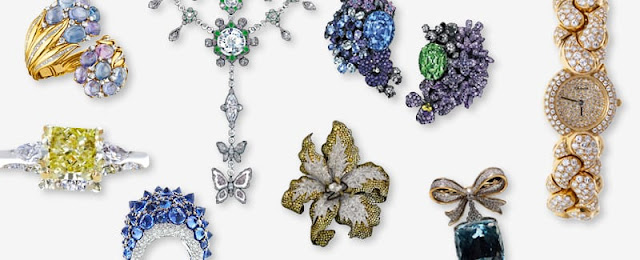Top 4 Bespoke Fine Jewelry Brands
Earlier this summer, we talked about “high jewelry.” For a refresher, read that post here. We also delved into some of the iconic designers and facts about America’s own Tiffany & Co. As we continue our exploration into iconic jewelry designers and brands, the next stop is literally a trip around the world—to Paris, Italy, Asia, and the United States.
JAR, Paris
The most exclusive of iconic jewelers (arguably ever!) is Joel Arthur Rosenthal, reverently known as JAR. Though born in Brooklyn, the 76-year-old JAR settled in Paris years ago and is not only exclusive, he’s notoriously reclusive. Jewelry experts agree he is the number-one contemporary jewelry artist that defines modern high jewelry, and most will refer to him as today’s equivalent of the great Peter Carl Fabergé. Not that JAR’s works look like Fabergé’s, but his level of talent and his influence are to contemporary high jewelry what Fabergé’s were to his time.JAR refuses to be interviewed, doesn’t advertise, and his Place Vendôme shop doesn’t even have a sign or a display window. Clients can only come through a referral from an existing client, unless they have a totally unambiguous name (such as, say, the Prince of Wales, who reportedly is a client.) He’s even been known to refuse to sell a piece—at any price—to someone he thinks doesn’t have the taste and culture to appreciate it. Each piece he creates is one of a kind, and custom created for the client. His annual production is only about 70 or 80 pieces, if not fewer.
JAR was not born into a jewelry family. His upbringing was typically New York Jewish, the son of a postal worker and a biology teacher. In college, he studied linguistics, art history, and philosophy, but after college, he headed to Paris where he worked as both a screenwriter and a needle-stitcher.
Among his needlework clients were the famed luxury brands Hermès and Valentino. He had begun working with highly unusual colors of yarn, presaging his future work as a jeweler who masterfully “paints” with gemstones in pavé settings as fine as his needlework stitching once was. He is renowned for setting gems in blackened alloys to further enhance their color and in fact insists all displays or photographs of his work be done on a black background.
JAR has had only two public exhibitions of his jewelry. The first was in 2002 in London and the second was in 2013 at the Metropolitan Museum of Art in New York, the only living jeweler to have had a solo exhibit at the Met. But in both cases, the reclusive artist provided no information for museum visitors to reference in the exhibit, believing the jewelry should speak for itself.
Even books about JAR are collectible. Two immense publications, JAR I and JAR II, command over $1,000 for a new edition, but the catalogs from his two exhibits are more attainable, especially the one from his Met exhibit.
Laurence Graff, London
Just as JAR had a typical New York Jewish upbringing, Laurence Graff, OBE, had its London equivalent. Graff was born in London’s Stepney district in 1938—just before WWII—the son of a tailor and newsstand operator. He left school at age 15 to apprentice to Schindler, a jeweler in Hatton Garden, London’s jewelry district. When Schindler went out of business about a decade later, in the early 1960s, Graff began selling his own designs to jewelers all over England, but soon would become known worldwide for his diamonds.In the early days of his career, he literally would buy a fine diamond and travel with it until he found a buyer. That was essentially the start of Graff Diamonds, officially founded in 1960. But after a design he commissioned won the prestigious De Beers Diamonds International Awards in 1966, his name became automatically associated with fine diamonds.
“I came from a background where diamonds meant something because so many Jewish people came out of East Europe and suffered and lived off their diamonds,” he said in a 2013 interview in a British jewelry trade journal.
By 1974, Graff had begun specializing in selling to ultra-rich Middle Eastern buyers, including one member of the Saudi Arabian royal family who came into his shop and bought everything in stock. At a time when the United States and most of the Western world were mired in recession, Graff’s focus on the Middle East prompted (or resulted from) his observation in a 1998 interview that money never goes away, it just moves around.
Today, Graff is renowned for his interest in big stones and fancy color diamonds. He is listed by Forbes among the world’s billionaires, with a fortune estimated at $5.5 billion. He has 50 retail shops around the world, his own diamond-procurement and cutting facility in Botswana, and manufactures his finished jewelry in his London workshop, which turns out a remarkable 350 pieces per month, an extremely high volume for a jeweler of this caliber.
In 2008, Graff achieved notoriety for his acquisition and re-cutting of the Wittelsbach Diamond (now the Wittlelsbach-Graff Diamond), a 35.52-carat grayish-blue. Graff had the stone repolished, losing 4.45 carats of weight in the process and prompting howls of outrage in the diamond community. But at least one noted gemologist, Richard Wise, observed that Graff did right: the re-cutting raised the stone’s value because its GIA color grade went from Fancy Deep Grayish Blue to Fancy Deep Blue (pure colors are more valuable) and its clarity grade rose from VS2 to Internally Flawless. The original star-like facet pattern also was retained, keeping the stone’s character.
In 2014—his 60th anniversary in the jewelry industry—Graff was awarded an OBE from Britain’s Queen Elizabeth II for his services to the industry.
Wallace Chan, Hong Kong
Chinese-born Wallace Chan began fashioning flowers out of plastic at age eight. He is renowned for his gem carving skills, but his delicate pieces with their exquisitely set gemstones are highly sought after. His designs are informed by nature, philosophy, and sculpture, something that’s not surprising as that was his original training.Chan was born in Fujian, (mainland) China in 1956, but at age five his family moved to Hong Kong, then a British colony. He left school at age 13 to help support his family and became an apprentice sculptor three years later. Two years after that, he opened his own workshop creating Buddhist sculptures, but quickly moved on to creating jewelry pieces.
His first big break came when a Taiwanese art collector commissioned him to create a stupa, a meditation structure for a famous garden. Later, he would become famous for gem cutting; specifically devising the means to carve designs within a gemstone, adapting the techniques used in creating cameos and intaglios, and adding in a dash of inspiration from multiple-exposure photography. It became known as the “Wallace Cut,” because in Chan’s gems, an image is reflected within the gem to create a three-dimensional effect.
Chan said in an interview with Christie’s that he observed how light entered a stone’s body through its surface and interacted inside.
“When I carve an image at the back of a gemstone, that image is visible on the front. But, thanks to the stone’s own reflective properties the design appears four additional times. When viewed from the front, the result seems almost three-dimensional.”
Chan’s favorite themes are opulent yet delicate nature-inspired designs (mainly insects, butterflies, and flowers), while his sculptural forms are inspired by the great classic artisans like Michelangelo.
Michelle Ong, Carnet, Hong Kong
Born into a prominent family in Hong Kong, designer Michelle Ong this year celebrates her 20th anniversary of creating jewels for Carnet, a brand partnership of Ong and Avi Nagar, whom she met while working in the diamond business. Nagar sources the materials and handles the business side of Carnet while Ong brings the stones and jewels to life.Ong has the rare distinction of being not only one of the few people in the world to whom the famed JAR will open the doors of his salon, but her designs have drawn high praise from him and he is both a mentor and a dear friend to her. And yes, she’s also one of his clients.
Chances are, you’ve seen Ong’s jewelry already: she supplied the biggest pieces worn by characters in last year’s blockbuster rom-com Crazy Rich Asians.
The Carnet brand began as a notebook filled with sketches: jewelry she would want to wear herself for the many formal events she and her husband attend in Hong Kong. Her first design was a pair of bold flower earrings. Friends asked her to make similar pieces for them, and the rest, as they say, is history. (One gets the impression she’s got firsthand experience with the world depicted in Crazy Rich Asians…)
Carnet is renowned for designs using shimmering, feminine rose-cut and briolette diamonds, which Ong says give off a softer, more subtle and delicate light than modern brilliant-cut diamonds, which she finds a bit harsh. Although Ong began her career in the diamond industry she equally uses many exquisitely colored and fancy-cut gemstones. Each piece is meant to be a wearable, collectible piece of art informed by both traditional and modern elements, as well as influences from both East and West, owing to the years Ong lived and studied in Canada. She also cites her interest in antique jewelry and European art as influences in her designs, which she blends with Chinese culture.
To celebrate her 20th anniversary, renowned jewelry historian Vivienne Becker penned a voluminous coffee-table book, Carnet by Michelle Ong. And the introduction was penned by none other than Joel Arthur Rosenthal himself, who despite his own aversion to publicity apparently had been bugging his friend to do a book for a long time. The book launch was held this past spring with a reception at Christie’s London auction house, along with a selection of Carnet jewels to covet.
Check out princess cut diamond earrings selection for the very best in unique or custom, handmade pieces at EyeOnJewels.








Comments